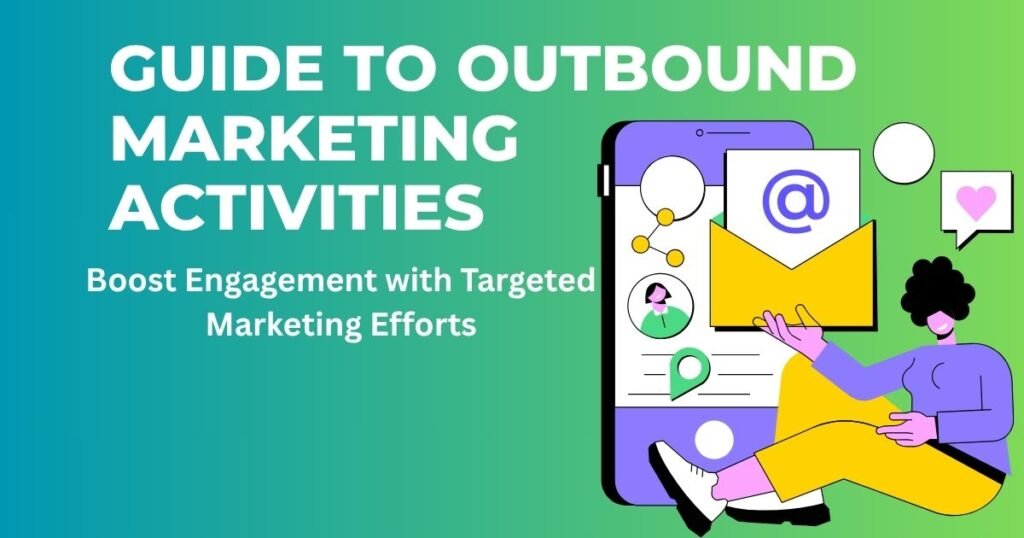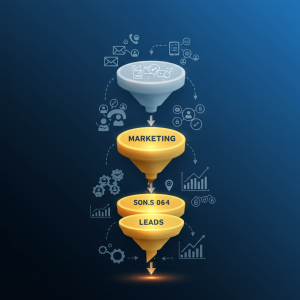The Ultimate Guide to Outbound Marketing Activities

Outbound marketing has been an industry mainstay for decades. It sends brands, products, or services straight to their ideal users, hoping to catch their attention and pique their interest. But in a world of digital noise, how can companies use outbound marketing tactics to drive growth?
In this guide, you’ll learn what outbound marketing is, the key strategies, why it’s so effective compared to inbound, how to measure performance, and what the future of this ancient tactic looks like.
What is Outbound Marketing?
Outbound, or “push,” marketing is the term we use for marketing activities where you first have to send a message out to get new customers. From 20th-century TV spots to 21st-century email pitches, outbound is all about proactively delivering your message, instead of waiting for an audience to find you.
It’s a simple but powerful mechanism: quickly, efficiently raise awareness and interest in what you’re selling.
Outbound marketing is still a key part of the general marketing efforts of all types of businesses, from startups all the way to big, established companies. Whether you’re new to outbound marketing efforts or if you simply need to tweak an existing campaign, it is important to understand how these tactics work and whether they may be effective for you.
Outbound Marketing Tactics that Work
Cold Calling
Despite its bad rap, cold calling, especially in B2B environments, continues to be one of the most straightforward and effective ways to connect with prospective clients in a remote selling scenario. If you do your homework and personalize your pitch, cold calls can open the door to future discussions.
Email Outreach
Yet another favorite outbound tactic is email campaigns. Businesses can deliver messages tailored for products, services, or events to the relevant part of the audience. With software tools like Mailchimp or HubSpot, it’s easier to scale and track outreach.
Paid Advertising
Outbound marketing staples include paid ads through search engines (like Google Ads) and social media platforms (like Facebook and LinkedIn). They give brands a way to get in front of people who potentially are or passively are interacting with relevant content.
Direct Mail
While it’s considered an old-school format, direct mail has its place even in our digital world. A postcard, a catalog — when it comes to physical mail, it’s a chance to cut through clutter and make a one-on-one connection with your audience.
Event Marketing
Trade shows, webinars, and sponsored events are considered outbound marketing because they provide companies with an opportunity to directly present their value to attendees. Rather, in these events very good leads are found and ideas exchanged.
Social Media Ads
Platforms like Facebook, LinkedIn, and Instagram are experienced with this level of targeting with paid media campaigns. These platforms are often used in outbound marketing to connect with prospects in places they are most likely to spend time on the internet.
TV and Radio Advertising
Even though the digital marketing race is at an all-time high, TV and radio advertising are still effective for businesses trying to reach larger demographics. These are fabulous ways to get your word out in a bigger way.
Advantages of Outbound Marketing
Since outbound marketing offers several benefits to companies, here are a few more:
-
Immediate Reach
Outbound marketing is when you put yourself in front of your audience without them looking for you. That kind of exposure can be key for startups that want to get noticed quickly. -
Broad Reach
Outbound marketing channels such as TV commercials or search engine ads can help you reach a broader audience, including those who do not actively look for your service. -
Easier Scaling
Paid online platforms, among others, they make outbound strategies very much accessible to businesses who need to increase their outreach fast. -
Great for Brand Awareness
Outbound marketing creates a cycle of repeating your message to potential customers. When it’s time for your prospects to make a purchase, they’re more likely to recall your brand because it will be more familiar to them.
Outbound Marketing vs. Inbound Marketing
The reality is that the content consumption behavior of your Audiences is changing drastically.
Whereas outbound marketing tries to “push” a message out, inbound marketing does the opposite — it pulls people in using strategies like content creation, search engine optimization, and social media engagement.
Here’s a look at how the two approaches compare:
| Feature | Outbound Marketing | Inbound Marketing |
|---|---|---|
| Goal | Directly advertise your product/service | Educate & provide value first |
| Focus | Wide, focused advertising & outreach | Content-driven, context-establishing |
| Examples | Email barrages, cold calls, TV commercials | Organic blog posts, SEO, and social media posts |
| Approach | Proactive | Reactive |
| Conversion Time | Short-term, direct | Long-term, nurturing |
Great marketing often does a combination of the two, which forms the basis for semi-hybrid model of marketing that I will discuss below.
Outbound Marketing Campaign Success Metrics
Effective tracking is everything to a successful outbound marketing strategy. Here is how you can gauge success:
KPIs to Monitor
-
Europe Cold call or email response rate
-
Click-through rates (CTRs) on digital ads
-
Landing page conversion rates
-
Return on investment on paid ad campaigns
Tools and Platforms
Leverage marketing analytics tools such as Google Analytics, HubSpot, or Salesforce to collect and analyze outbound data. These channels are ways to measure what’s working and what needs to change.
A/B Testing
Test various ad formats, messaging, or email iterations to understand what your audience is responding to.
Trends to Watch in Outbound Marketing
The landscape of outbound marketing is ever changing. Stay in front by reading these trends:
Personalization
From emails to ads, personalizing is more important than ever. Audiences want to see customized experiences that address their specific ones.
AI-Powered Outreach
AI is increasingly central to significantly better targeting of outbound campaigns. Automation is also helping businesses to cut down on busy work by automating repetitive outreach.
Omnichannel Strategies Integration
Agencies and businesses are integrating different outbound channels to design frictionless customer journeys. Approaching audiences on their own terms, companies can become more effective — and more trustworthy.
Enhanced Data Usage
Outbound initiatives fueled by data are becoming more precise, and reaping higher ROI, as businesses gain deeper visibility into audience activity.
Leveraging Outbound Marketing to Grow Your Business
Parasailing outbound marketing techniques Perhaps the tactics of outbound marketing have changed over the years but their ability to deliver results is as strong as ever. With the right outbound strategies, you can gain access to new audiences and generate better leads.
It’s all about choosing the right combination of activities to hit your objectives…and then consistently optimizing your campaigns using data and performance data.
See how a well-crafted brand positioning statement can strengthen your messaging and market presence.





